Best Fly Fishing Rivers In Scotland
Best Fly Fishing Rivers For Fishing Holidays In Scotland
Excellent salmon fishing rivers are abundant for the fly fishing enthusiast in Scotland, where the elusive Atlantic Salmon can be caught, from the small but intimate Highland streams to the mighty River Tay. In Scotland, the fly fishing opportunities on offer are truly unique and endless.
Scotland has nearly four hundred different salmon rivers that attract fly fishing enthusiasts worldwide to swing a fly. Fly fishing in Scotland for salmon takes you to some of the most breath taking locations you would have never known existed unless you were an angler.
There are so many prolific salmon rivers in Scotland, so the question is, where are the best places in Scotland to catch one of these magnificent salmon? As always, every season is different and all the rivers in Scotland have different times of the year when the main salmon run appears. Other variables to consider also are, of course, the weather and water conditions. However, some rivers consistently produce more salmon than others when fly fishing in Scotland.
The Scottish Highlands
The Scottish Highlands are a mecca for fly fishing for salmon. Several of the salmon rivers located in this region open in mid-January. These include the Thurso, Helmsdale, Moriston and Naver, amongst others. Many of these rivers regularly produce fresh fish in January. These rivers have the advantage of being generally smaller than rivers in central and southern Scotland. This means that they are more easily covered with a fly rod. A fresh salmon is generally a fish that has been in the system for less than 48 hours and can be pretty interested; if it sees a fly, you have a good chance it will go on to take it. So, on a smaller river, there is more chance of the fish seeing the fly. This can be a significant advantage when trying to locate one of these magnificent silver tourists. On most of these smaller rivers, the prime months for fly fishing are from March through August, when generally, water conditions are ideal for fly fishing in Scotland. This is usually when the main fresh runs of salmon enter the rivers.

River Thurso
The River Thurso, which is the most northerly fly fishing salmon river in Scotland, has to be one of the most productive. The River Thurso benefits from having Loch More at its headwaters. This allows water to be released during dry spells, ensuring enough flow for fly fishers to swing their flies effortlessly.
The River Thurso usually enjoys a very productive season and fish can be caught fly fishing from opening day on the 11th of January right through to the end of season. The prime months for anglers fishing the River Thurso are from the end of May through to August.
River Alness
Moving south from the northern rivers in the Highlands of Scotland, another fantastic river for fly fishing in Scotland is the idyllic River Alness. The Alness is also classified as a highland river situated just north of Inverness. The River Alness is one of Scotland's most picturesque fly-fishing rivers for any angler to experience. The river starts its journey from Loch Morie and ends in the Cromarty Firth. The River Alness offers fast flowing pools, which are excellent for fly fishing.Although generally, the River Alness is classed as a spate river similar to the River Thurso but much smaller in size, the River Alness is similar in the fact that there is also a dam located at the head of the river at Loch Morie. The dam can release water into the river, enabling anglers to enjoy some good sport.The River Alness starts producing fish in April when the river boasts a small run of spring salmon. July onwards is generally when the River Alness becomes a fly fisher dream and catches increase significantly. Although the salmon are usually smaller in size, the River Alness can produce excellent sport from July through to the end of September.
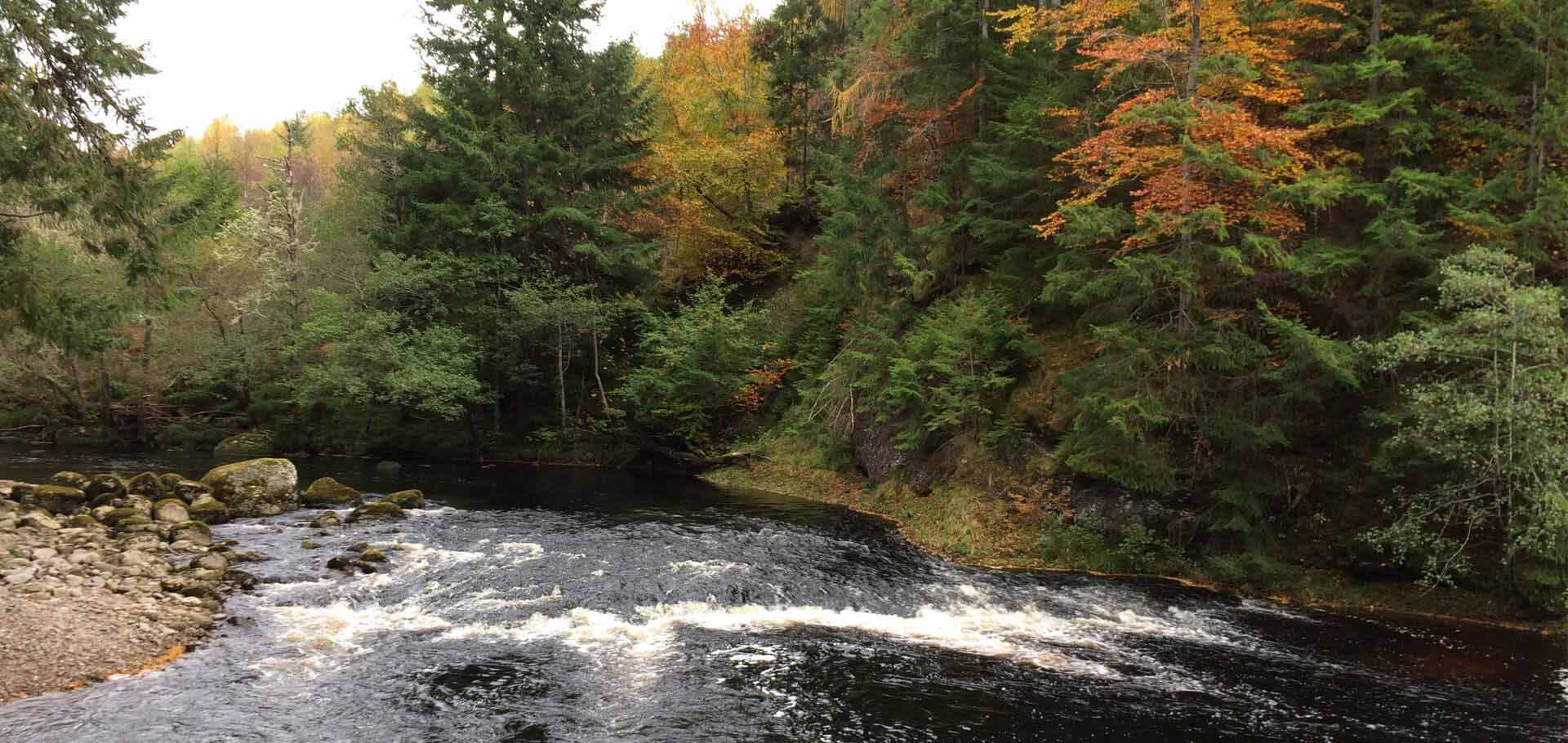
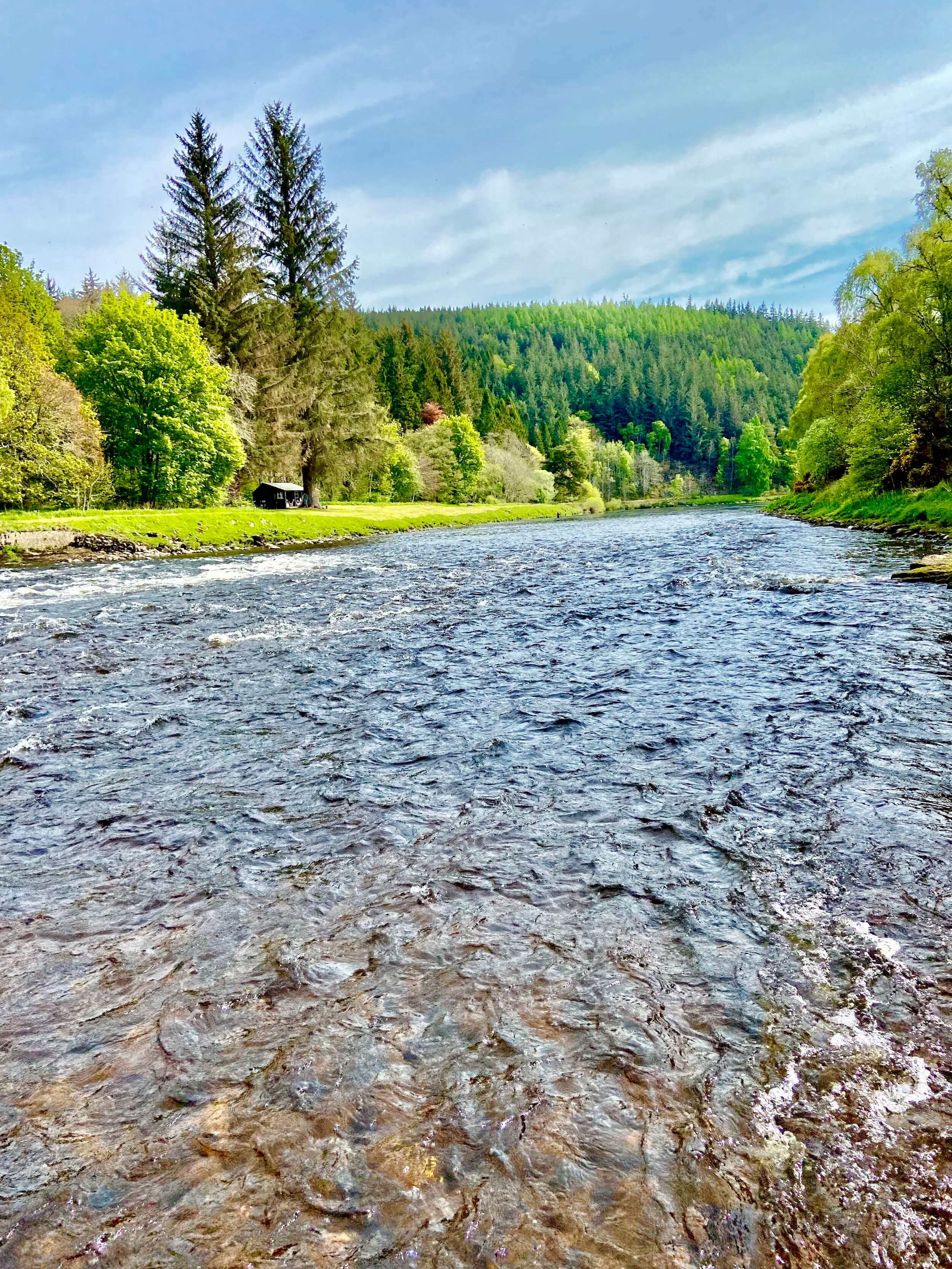
River Spey
Moving southeast from the River Alness, we come to what must be the most famous fly fishing river in Scotland. The River Spey is the fastest flowing river in the UK and offers excellent water for fly fishing in Scotland. The River Spey truly showcases some of the best fly fishing that Scotland has to offer and can only be described as a dream for any fly fishing angler, with its picturesque runs and tantalising pools that are simply irresistible.The river opens in early February, and fresh fish come to the net from the beginning of the season onwards. Fly fishing on the River Spey depends greatly on water temperature and height. The river originates in the foothills of the Monadhliath Mountains, which are usually covered in snow during the early part of the season.
As fly fishing anglers, we want to see these mountains with compacted snow from the end of November until early Spring, with a gradual thaw come April/May. This usually guarantees a good water height for fly fishing.If the water temperature is low, many salmon will lie in the river's lower reaches. As we head into April and May and there is a lift in water temperature, the fish run further up the river system, ensuring excellent sport on most of the beats up and down the river.
The prime time for fly fishing on the River Spey is from May until August. The River Spey is also home to the world-famous Spey cast, so it's no surprise that some of the most prized fishing beats on the planet lie along the route of the majestic River Spey.
River Dee
Moving southeast from the River Spey, we reach the River Dee. This Dee produces decent numbers of spring salmon in Scotland. The River Dee opens its banks to anglers in early February. Although very similar in size to the River Spey, the river differs by having much clearer water compared to the slightly peaty colour of the River Spey.The River Dee runs through the heart of Aberdeenshire, and some of the fly fishing water on the river is truly magnificent.
Usually, early in the season, anglers fishing beats on the middle and lower river enjoy the majority of the sport. As the water temperature rises, the salmon tend to run further upstream and anglers can enjoy more consistent sport up and down the river.The summer fishing has dramatically improved on the River Dee in recent years, with grilse and summer salmon being caught from mid-June onwards. Many of the summer salmon that enter the river head for the River Feugh, which is a tributary of the River Dee.
The Feugh enters the river just below Banchory, and it is usually the beats downstream of the Feugh that produce the best sport during the summer months.In addition to the good runs of summer salmon and grilse at this time of year, the River Dee also enjoys a decent run of Sea trout. Sea trout over five pounds in weight are not uncommon and can provide some great fun when using a single-handed rod coupled with light tackle.
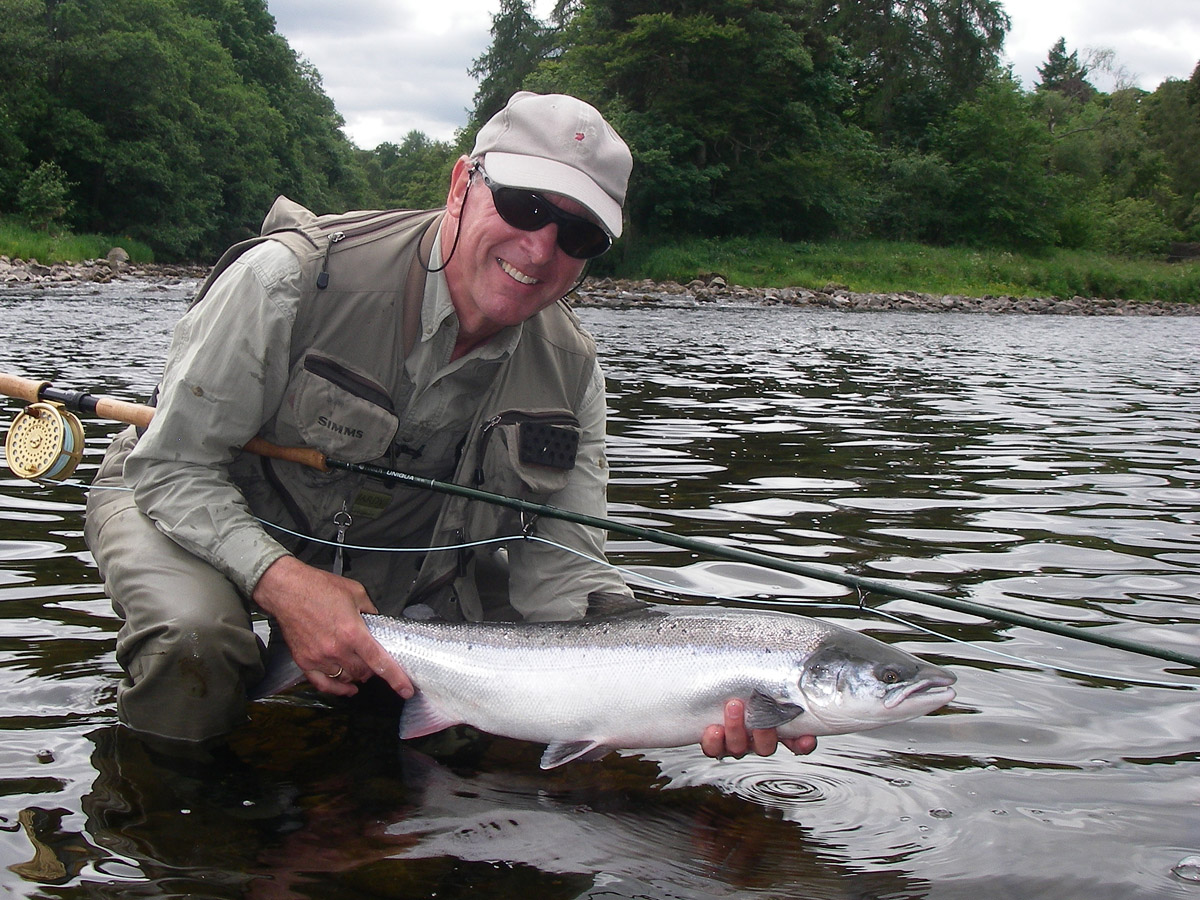
Central Scotland
Heading Southwest from the river Dee, we come to the mighty River Tay, one of Scotland's "big fish" salmon rivers. The River Tay is known for producing good numbers of salmon while fly fishing in Scotland. The River Tay, by volume, is the largest in the UK. The river begins its journey on Ben Lui and enters the sea in Dundee. The River Tay runs through the heart of stunning Perthshire, which is also known as the gateway to the fabulous highlands. The Tay is much larger than the River Spey and River Dee but offers excellent sport when fly fishing in Scotland.
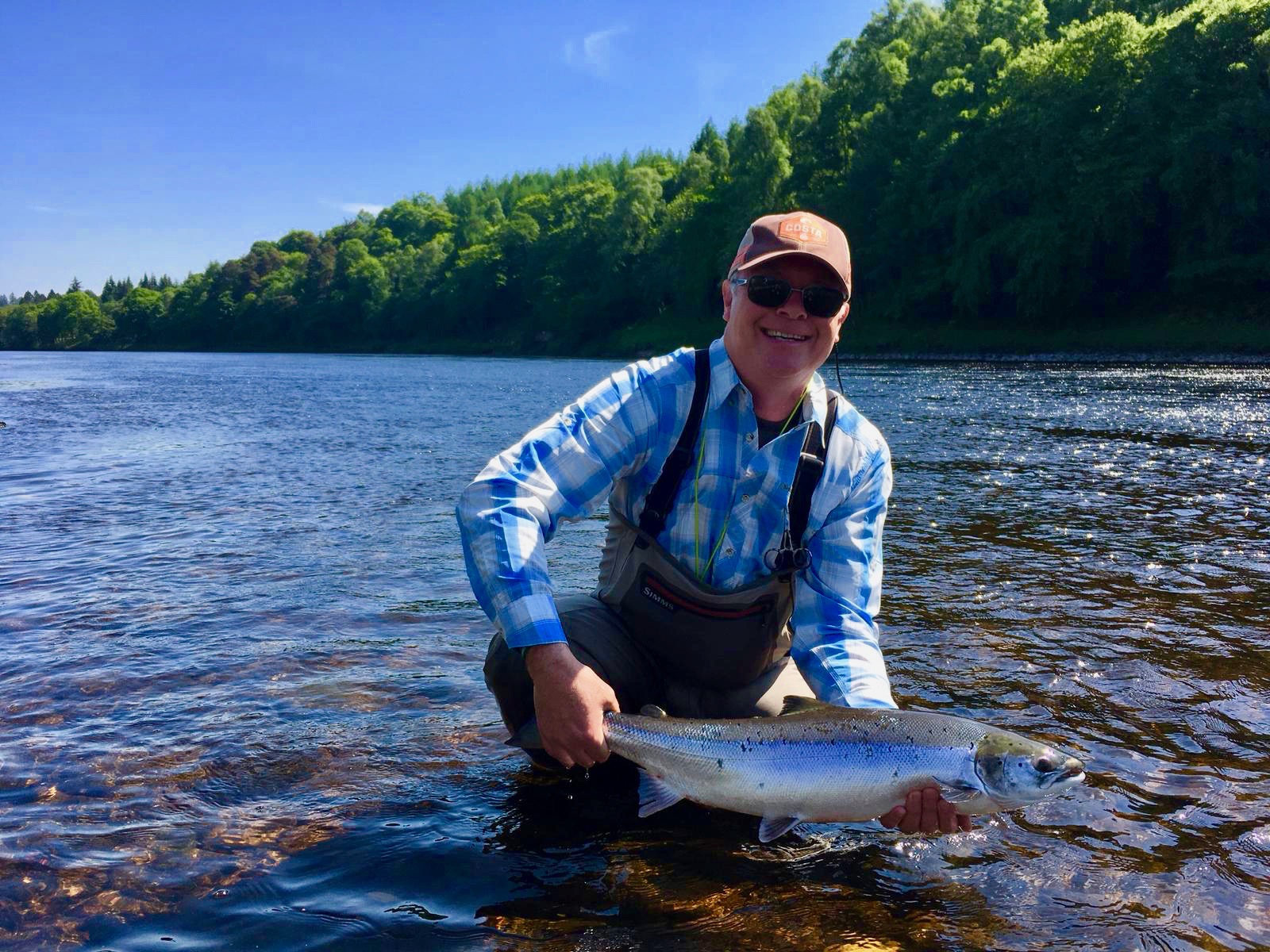
River Tay
The River Tay opens its banks to anglers on the 15th of January and fresh salmon come to the net from opening day onwards. Many fish landed in the Spring are huge specimens, with several over the thirty pound mark coming to the net yearly. The early salmon that enter the river in January through until the end of March are heading for the higher reaches as far as Loch Tay and beyond. As we move later into the spring period on the River Tay, many of the salmon that enter the river often run upstream to some of the river's tributaries like the Lyon, Tummel and Isla. These tributaries of the River Tay also offer excellent sport and are much smaller in size compared to the main river.
On the main River Tay, the runs of fresh spring salmon generally peak in April and May, and this is when big catches can be made. In the summer, the River Tay offers excellent fly fishing with a decent run of grilse entering the system from the beginning of June until late August. Although the grilse are smaller in size than the spring salmon, this time of the year can offer excellent sport on the fly rod. Even though the River Tay can be pretty daunting at first sight due to its sheer size, most salmon will take the fly around 20-25ft from the bank and tend not to lie mid-stream, so a long cast while fly fishing is unnecessary.
River Tummel
The River Tummel is the most prolific tributary during the spring months. Decent numbers of salmon enter the River Tummel from mid-March onwards and so the Tummel can offer excellent sport during the spring months. The River Tummel is a relatively short river and at the head of the river, located in Pitlochry, is a dam, which acts as a temperature barrier. Large numbers of spring salmon regularly congregate below the dam. Once the water temperature rises (usually in late April), they start running through the man-made fish pass and enter Loch Faskally. The River Tummel is a fly fishing angler's dream. Being a narrower river than the main River Tay, this river is much more easily coverable with a fly rod. The River Tummel is a hidden gem for anglers who wish to fly fish in Scotland. The best time to fly fish for salmon on the River Tummel is usually from March to the end of June.
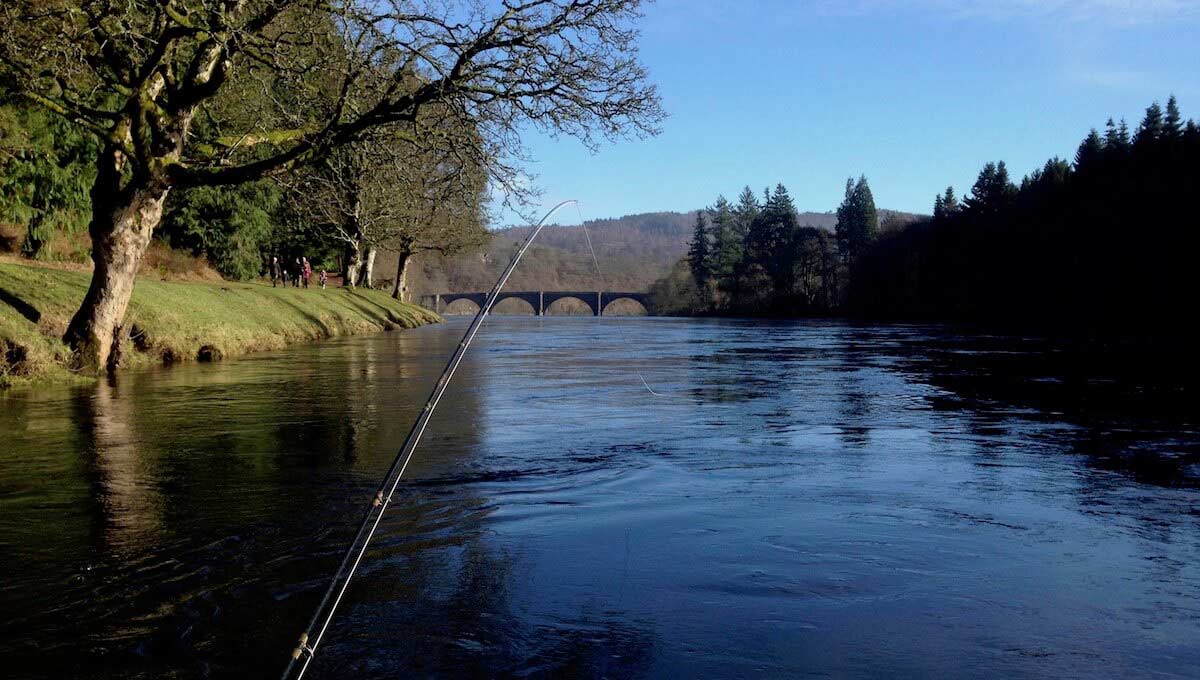
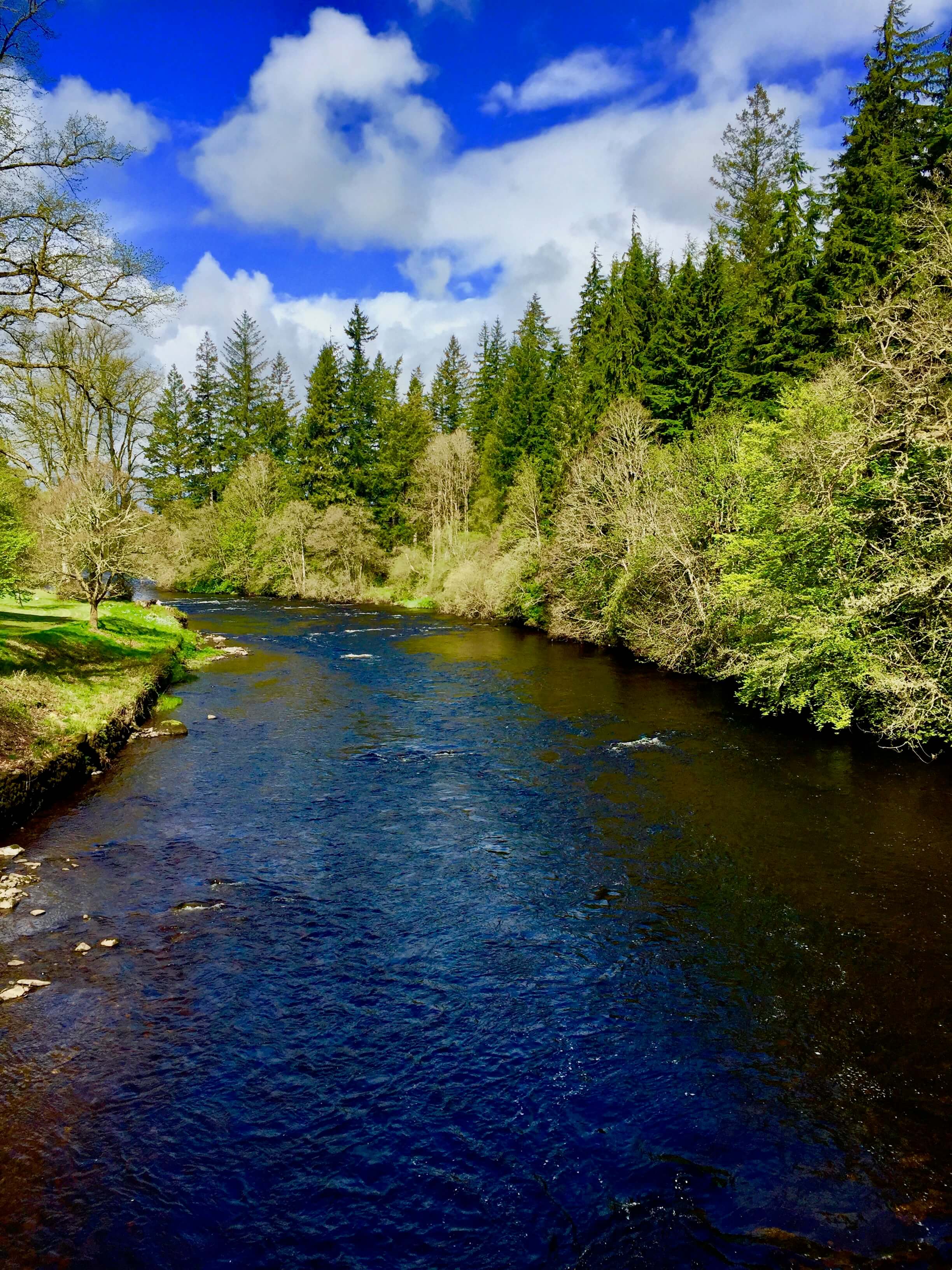
River Teith
Next, we will head Southwest to the River Teith. The River Teith is one of Scotland's best-kept secrets. It is much smaller than the River Tay but can be just as productive. The River Teith originates in Callander and runs through beautiful Stirlingshire in central Scotland. The river opens its banks to fly fishers in early February and offers a good spring and backend run of salmon. Fresh salmon can be caught on the river Teith from opening day onwards and the number of salmon caught peaks in late April /May and then again in August/September. The river tends to fish better after a lift in the water, which allows much more flow for fly fishing. As the river is much smaller than some other rivers in Scotland, it has the advantage of being easily coverable with a fly rod.
Scottish Borders
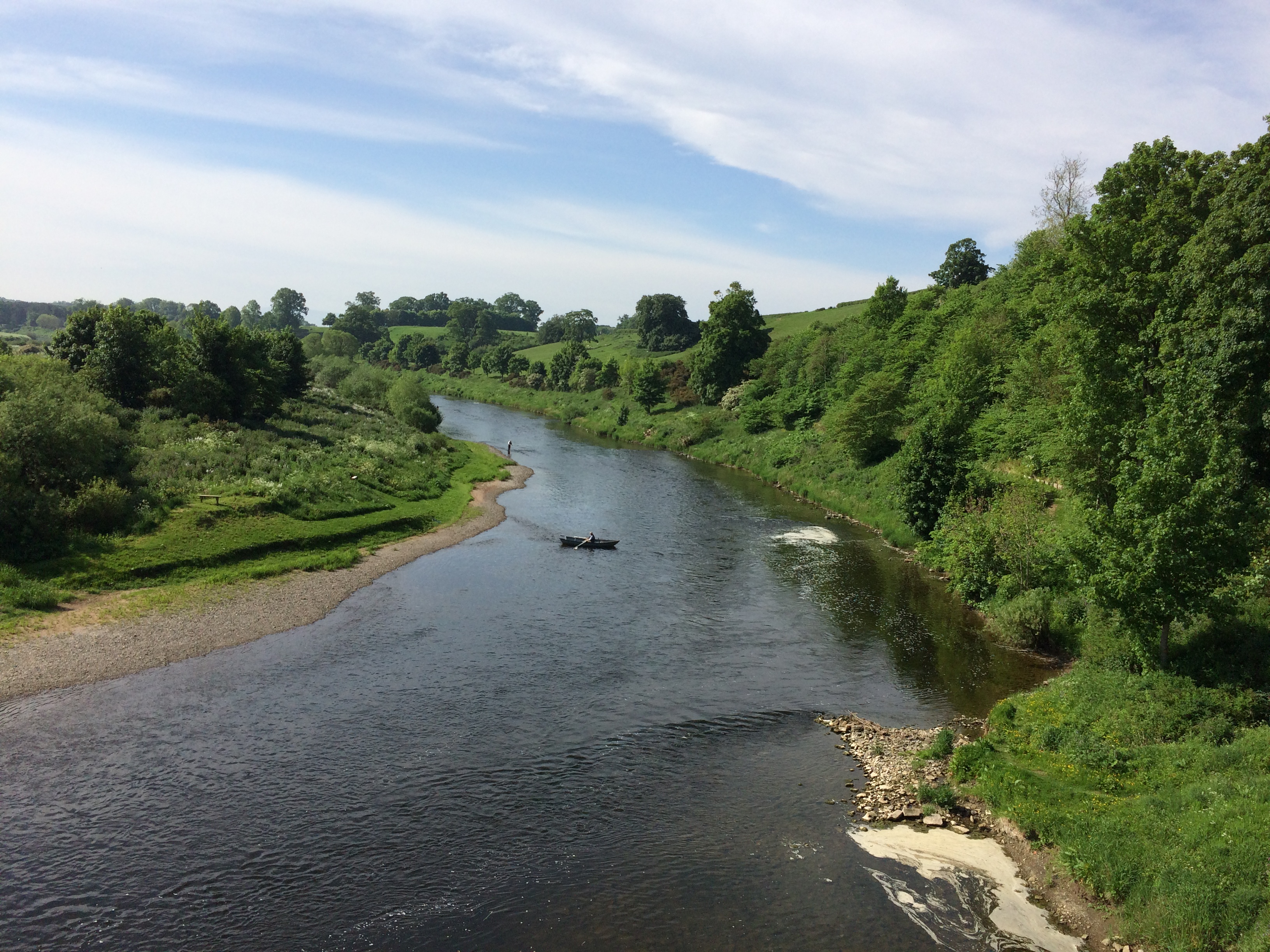
River Tweed
The River Tweed is the most productive river in terms of catches in Scotland. The River Tweed is set within the rolling hills of the Scottish Borders, with some of its banks set in both Scotland and England. The river opens at the beginning of February and has a decent spring run of Atlantic Salmon. Early in the season, the majority of the fish are usually caught from beats located on the lower part of the river. The middle beats also enjoy some excellent sport from March and April onwards. During the summer months, the bottom beats of the river are usually the most productive, especially if the water is low. The River Tweed also has an excellent run of Sea trout, with fish weighing into double figures regularly caught.
Scottish Islands
Away from the mainland, some fantastic fly fishing opportunities exist on some Scottish Islands. The Hebrides are a group of islands located on the West coast of Scotland. These islands offer fly fishing anglers some excellent sport on both lochs and rivers. Many of the lochs are interconnected by smaller rivers and like the Scottish Highlands, many of the rivers are spate rivers and fish better after there has been a lift in water. Loch style fly fishing for salmon from a drifting boat can often produce good results. The best of the sport on these rivers and lochs are usually during the summer months when impressive numbers of grilse can be caught. Most of the rivers and lochs in this part of Scotland are open until the middle of October.
Whether you choose to explore an intimate Highland river, the world-famous River Spey, or even venture to the serine Scottish Islands, Scotland offers some of the finest fly fishing in the world. From the thrill of the chase to the satisfaction of landing that prized Scottish salmon, these rivers are a haven for any fly fishing angler seeking that unforgettable fishing experience of a lifetime.
